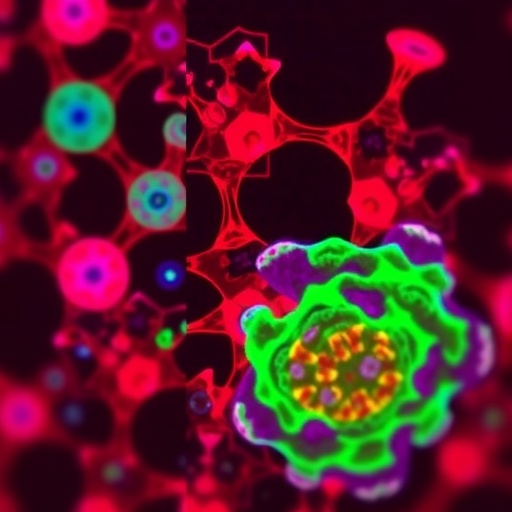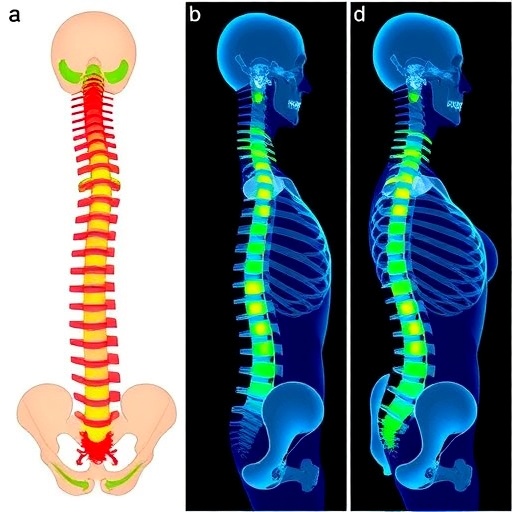In an eye-opening and ground-breaking study occurring within the realms of pediatric genetics, researchers have unveiled a case that intricately combines both ADH5/ALDH2 deficiency and 3q29 microduplication syndrome. This rare presentation merits significant attention from the global scientific community due to its implications for understanding genetic interactions and the multifaceted nature of congenital disorders. Highlighting the intersections of genetic research and clinical implications, this case study adds a complex layer to our understanding of human genetics and heritable conditions.
The pivotal role of alcohol dehydrogenase 5 (ADH5) and aldehyde dehydrogenase 2 (ALDH2) in the metabolic pathways of bioactive substances forms the cornerstone of this investigation. Both enzymes are essential for the normal breakdown of alcohols in the body. Deficiencies in these enzymes can lead to a plethora of health challenges, marking a significant gap in metabolic function that can contribute to long-term developmental issues, especially in early childhood. The intricate biochemical pathways influenced by these enzymes manifest in various physiological anomalies, necessitating profound research and understanding.
The 3q29 microduplication syndrome, on the other hand, is a chromosomal abnormality associated with subtle to significant neurodevelopmental disorders. This condition results from a duplication of a segment of chromosome 3, and it has been correlated with cognitive impairments, behavioral issues, and a heightened risk for autism spectrum disorders. By exploring the combined effects of these two genetic anomalies, the study provides a novel perspective on how overlapping genetic deficiencies can lead to compounded health challenges in affected individuals.
The case study involves a unique individual diagnosed with both ADH5/ALDH2 deficiencies and the 3q29 microduplication syndrome, presenting an unprecedented opportunity to explore the resulting health complications. Clinical manifestations included cognitive delays, anatomical anomalies, and varied metabolic responses to standard nutritional inputs, necessitating comprehensive medical intervention and tailored therapeutic strategies. Such multifactorial syndromes raise questions not only concerning diagnosis but also concerning treatment approaches that must account for the interplay of these distinct genetic factors.
Meticulous phenotypic observations reveal that patients exhibiting both ADH5/ALDH2 deficiencies as well as 3q29 microduplication often display a range of developmental delays. This case study’s subject demonstrated pronounced language acquisition difficulties, social interaction deficits, and atypical behavioral markers, suggesting a tumultuous interface between metabolic dysregulation and neurodevelopmental outcomes. The intersectionality of genetic conditions serves not just as a diagnostic challenge but a clinical one, with caregivers needing to devise comprehensive management plans addressing diverse needs.
Genetic testing plays an indispensable role in revealing complexities associated with these conditions. The identification of both metabolic and chromosomal components through advanced molecular techniques enhances our understanding of inheritance patterns and risk factors. Next-generation sequencing has advanced capabilities to unveil hidden genetic variables, emphasizing the need for detailed genomic analysis in similar cases. In a world where technology transforms diagnostics, this case stands out as a reminder of the need for informed clinical interpretations of genetic test results.
Furthermore, the implications of this dual diagnosis ripple into family genetics and counseling. Establishing recurrence risks becomes herculean with multiple genetic factors at play. Families navigating the reveal of such complex genetic backgrounds benefit from multifaceted genetic counseling, illuminating the pathways and impacts of these inherited traits. Adequate familial education on genetic disorders can pave the way for better support systems, ensuring that families are not only prepared for diagnosis but are also empowered with knowledge for future generations.
Management strategies for individuals with ADH5/ALDH2 deficiency are paramount for improving quality of life. These may include nutritional interventions aimed at mitigation of associated metabolic disorders, alongside supportive therapies targeting developmental delays. Occupational and speech therapy can offer personalized approaches to enhance communication skills and social integration, providing holistic care while addressing the multifarious nature of their conditions.
In the realm of scientific research and healthcare, the collaborative efforts of multi-disciplinary teams focusing on complex genetic disorders such as the case outlined can catalyze enhanced understanding and treatment. Collaboration among geneticists, pediatricians, neurologists, and allied health caregivers is essential in crafting comprehensive care paradigms. As they pool expertise and insights, a more nuanced approach towards treatment strategies emerges, aimed at bolstering both physical and developmental health.
This groundbreaking case also opens doors to larger conversations about the importance of research on rare genetic conditions. Each case contributes significantly to accumulating collective knowledge, guiding future research endeavors focused on understanding multifactorial genetic disorders. The notion of shared pathology and overlapping genetic syndromes can inspire new interdisciplinary studies, intended to unravel the complex dimensions of genetic medicine.
As we progress into an era of advanced genetic therapies, understanding the implications of converging genetic disorders holds the promise for future innovations in personalized medicine. By studying rare concomitant conditions, researchers may unlock not just therapeutic targets, but also preventative strategies for at-risk populations. Genetic counseling can play an essential role in disseminating information, reinforcing the importance of genetic screening and early detection in enhancing life outcomes.
In conclusion, the implications of ADH5/ALDH2 deficiency in conjunction with 3q29 microduplication syndrome spotlight the intricate tapestry of human genetics. These intertwined genetic narratives require ongoing dialogue within the scientific community, driving curiosity and exploration of how genetics and environment coalesce to influence health trajectories. By highlighting individual cases within a broader context, we not only enhance scientific discourse but also contribute to the narrative of resiliency found in the face of genetic adversity.
This case study is a clarion call for an enlightened approach to the understanding of genetic anomalies, advocating for robust research initiatives and compassionate care. Each patient crystallizes a unique story, weaving together the threads of biology, environment, and personal experience, and underscores the necessity for continued exploration within the expansive realm of genetics.
Subject of Research: Combined effects of ADH5/ALDH2 deficiency and 3q29 microduplication syndrome
Article Title: A case of ADH5/ALDH2 deficiency combined with 3q29 microduplication syndrome
Article References:
Chenzhuo, S., Lingling, F., Ang, W. et al. A case of ADH5/ALDH2 deficiency combined with 3q29 microduplication syndrome. BMC Pediatr 25, 717 (2025). https://doi.org/10.1186/s12887-025-05948-3
Image Credits: AI Generated
DOI: 10.1186/s12887-025-05948-3
Keywords: ADH5, ALDH2, 3q29 microduplication syndrome, genetics, pediatric health, metabolic disorders, neurodevelopmental disorders
Tags: 3q29 microduplication syndromeADH5 deficiencyALDH2 deficiencybiochemical pathways in healthchromosomal abnormalitiescongenital disordersgenetic interactionsheritable genetic conditionsimplications for clinical geneticsmetabolic pathways of alcoholNeurodevelopmental Disorderspediatric genetics research





